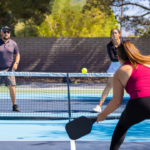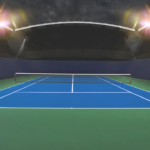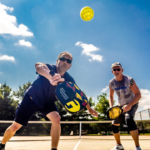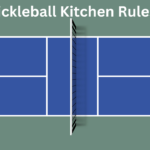How Ratings Are Assigned to the Players? Ratings are numerical values that depend on how many pickleball skills you have and how capable you are of enhancing them. Essentially, the higher the rating, the more prepared you’ll be to play in international tournaments against professional players. But how do you achieve such ratings? Tag along to find the answers to all your questions.
| Rating | Skill Level | Description |
|---|---|---|
| 1.0-2.0 | Beginner | Players learning the basics and making frequent errors. |
| 2.5 | Early Experience | Some knowledge of rules but still making mistakes. |
| 3.5 | Intermediate | Can hit drives, serves, and returns with some consistency. |
| 4.0 | Advanced | Mastery of forehand/backhand shots, serves, and strategic play. |
| 4.5 | Proficient | Skilled in various shots like dinks, drops, and spin with strong control. |
| 5.0 | Expert | Almost no errors, strategically uses opponent’s weaknesses. |
| 5.5-6.0 | Master/Pro Level | Complete mastery of skills, rules, and strategic play, ready for pro games. |
Pickleball Ratings System
Pickleball ratings are generally divided into three categories: beginner, intermediate, and professional. Additionally, these ratings can be presented in numerical form for the convenience of judges, ranging from 1.0 to 6.0. Let’s break down each numeric rating to help you better understand the pickleball rating system.
- 1.0 to 2.0 Rating
This rating is for beginners learning the game and its rules. At this stage, players often make errors and are still working on improving their skills. If you stay determined and focused on mastering the game, your skill level will rise, and so will your rating. - 2.5 Pickleball Rating
You can achieve a 2.5 rating when you have some early experience with pickleball and a basic understanding of the rules. However, this doesn’t mean you’re error-free yet. There is still room for improvement. - 3.5 Rating
A 3.5 rating indicates that you’ve learned how to hit drives, serves, and returns. If you’ve also gained consistency and control over your shots, you’ve likely reached this level of proficiency. - 4.0 Rating
Players with a 4.0 rating have mastered forehand and backhand drives, serves, and returns. They can also execute dinks and have begun to exploit their opponent’s weaknesses effectively. - 4.5 Rating
Reaching a 4.5 rating is more challenging. At this level, you’re skilled in both forehand and backhand shots, dinks, drop shots, and spin control. Players here also demonstrate strategic thinking and near-total control over their bodies and the game. - 5.0 Rating
At a 5.0 rating, players have mastered all the necessary skills and play with minimal errors. They know precisely when to apply different strategies and how to turn their opponent’s weaknesses into their strengths. Achieving this rating requires a lot of practice and patience. - 5.5 to 6.0 Rating
This is the highest skill level. Players rated between 5.5 and 6.0 have mastered every shot, know all the rules (including those in advanced pickleball brackets), and maintain consistency and control no matter who they’re playing against. Their confidence and skillset make them ready to play at the international level.
How to Get a Pickleball Rating?
Understanding your pickleball rating is important for motivating yourself to improve. As the saying goes, practice makes perfect. Consistent practice, focus, and a strategic mindset can lead you to achieve higher ratings and compete in top tier tournaments. Additionally, knowing what is DUPR in pickleball a rating system that tracks a player’s performance is crucial for players looking to fine-tune their skills.
Conclusion
Your pickleball rating reflects your skill level and how quickly you pick up the game’s concepts. Ratings range from 1.0 to 6.0, and reaching a rating of 5.5 or 6.0 takes significant effort. Remember, confidence and control are just as important as learning new strategies. Whether you’re using a quiz to check your progress or a chart to track your skill development, always strive for improvement.

I’m a passionate pickleball enthusiast with years of experience, dedicated to sharing the latest tips, strategies, and insights about the game. Whether you’re a beginner or a seasoned player, my goal is to help you enhance your skills and enjoy pickleball to the fullest.







